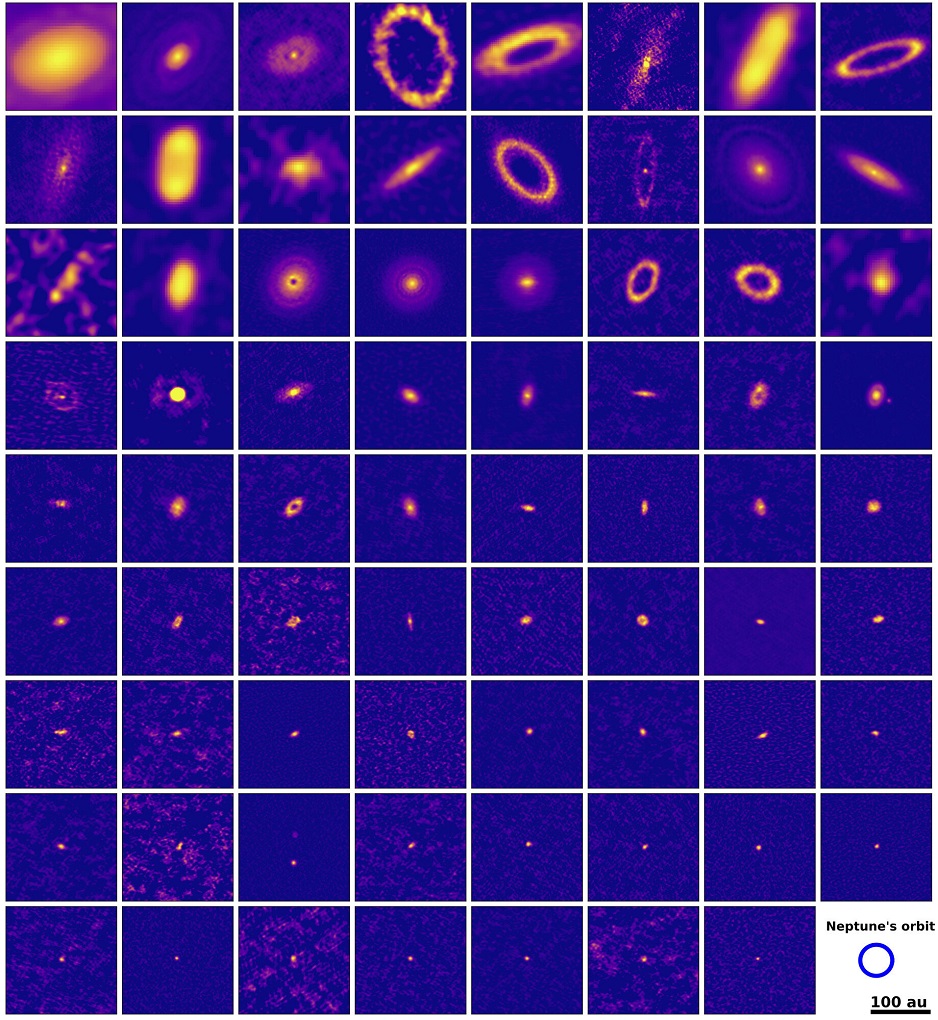Scientists used optical and radio telescopes to examine 73 protoplanetary disks. Planets are then formed from these gas and dust formations. However, new research has shown that they are much smaller in size than previously thought.

New research
Many protoplanetary disks in which new planets form are much smaller than thought. Using the Atacama Large Millimeter/submillimeter Array (ALMA), scientists at the Leiden Observatory in the Netherlands have studied 73 protoplanetary disks in the Lupus region. They found that many young stars contain modest disks of gas and dust, some as small as 1.2 astronomical units. The study, accepted for publication in the journal Astronomy & Astrophysics, establishes an important link between observed protoplanetary disks and exoplanets.
In the last decade, astronomers have photographed hundreds of protoplanetary disks around young stars using powerful radio telescopes on Earth, such as ALMA. Compared to the size of our Solar System, many of these disks extend well beyond the orbit of Neptune, our most distant planet. In addition, most disks have gaps where giant planets are thought to form. Research by PhD candidate Osmar M. Guerra-Alvarado, postdoc Mariana B. Sanchez and assistant professor Nienke van der Marel of the Leiden Observatory now show that these disks may be atypical.
Dimensions of protoplanetary disks
Using ALMA, the researchers photographed all known protoplanetary disks around young stars in the Lupus region, a star-forming region located about 400 light-years from Earth in the southern constellation Lupus. The study shows that two-thirds of the 73 disks are small, with an average radius of six astronomical units. That’s roughly the orbit of Jupiter. The smallest disk found had a radius of only 0.6 astronomical units, smaller than the orbit of Earth.
“These results completely change our view of what a typical protoplanetary disk looks like,” Guerra-Alvarado says. “Only the brightest disks, which are the easiest to observe, have large-scale discontinuities, whereas compact disks without such substructures are indeed much more common.”
Optimal conditions for super Earths
Small disks have mostly been found around low-mass stars, with masses between 10 and 50% of the mass of our Sun. It is the most common type of star in the Universe.
“The observations also show that these compact disks may have optimal conditions for the formation of so-called super-Earths because most of the dust is close to the star, where super-Earths are usually found,” says Sanchez. Super-Earths are rocky planets similar to Earth, but with a mass ten times that of our planet. This may also explain why super-Earths are often found around low-mass stars.
In addition, the study suggests that our Solar System was formed from a large protoplanetary disk that created large gas planets such as Jupiter and Saturn, but not a super-Earth. Super-Earths are considered the most common types of planets in the Universe.
Missing link
The study establishes a “missing link” between observations of protoplanetary disks and observations of exoplanets. “The discovery that most small disks have no gaps means that most stars do not contain giant planets,” says Van der Marel. “This is consistent with what we see in the populations of exoplanets around full-fledged stars. These observations directly link the disk population to the population of exoplanets.”
For their study, the scientists used ALMA observations taken in 2023 and 2024, with a maximum possible resolution of 0.030 arc seconds. They also used archival data to create, for the first time, a complete high-resolution disk study of an entire star-forming region.
Van der Marel says, “The research shows that we’ve been wrong for a long time about what a typical disk looks like. Clearly, we’ve been biased towards the brightest and largest disks. Now we finally have a full overview of disks of all sizes.”
According to phys.org


